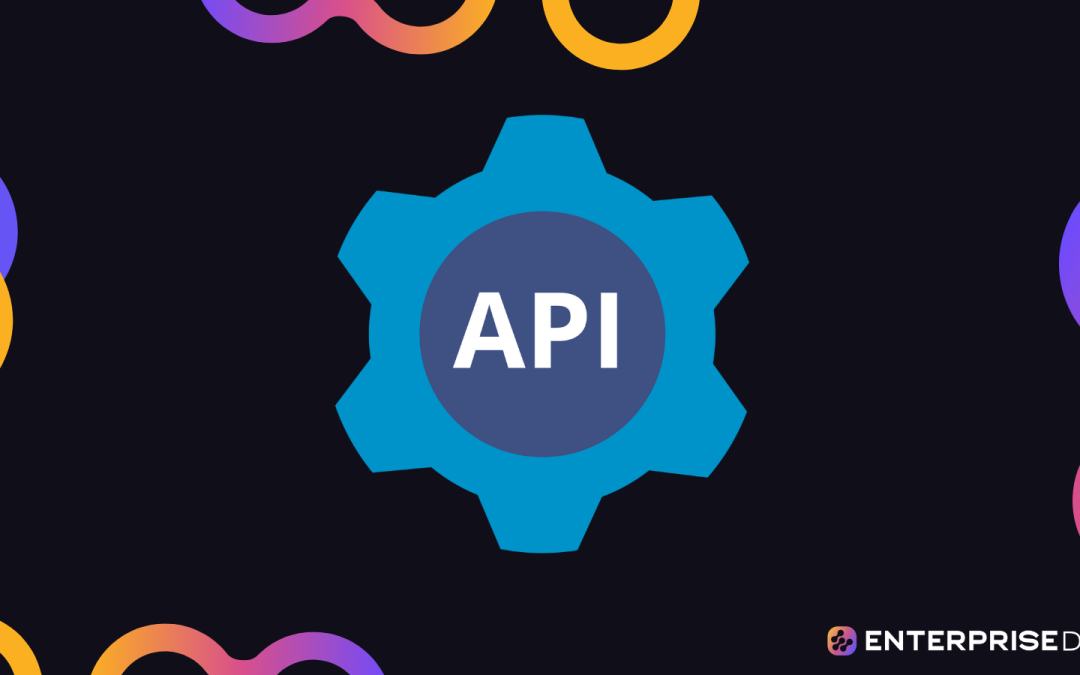Imagine ordering a ride through a mobile app, having the option to pay for it via your favorite payment service, and then sharing the trip details with a friend or family member in real-time. All of this is made possible by seamless service integration, a process that brings together different services to provide a unified and efficient experience.
APIs (Application Programming Interfaces) are the unsung heroes behind the scenes of service integration. These software intermediaries allow different applications to communicate with each other, share data, and perform various tasks. By serving as connectors between systems, APIs make it possible for businesses to offer their customers a more convenient, connected, and personalized experience.
This article will explore how APIs make seamless service integration possible and why businesses should prioritize implementing them to stay competitive in the digital age.
Let’s get into it!
Understanding APIs and Service Integration

Before diving into the nuts and bolts of how APIs enable service integration, it’s important to have a solid grasp of what APIs are and what we mean by “service integration.”
What is an API?
At its core, an API (Application Programming Interface) is a set of rules, protocols, and tools that allows different software applications to communicate with each other.
Imagine you’re at a restaurant and want to place an order. The menu you receive is the API; it lists the available dishes you can order. You communicate your order to the waiter, who then relays it to the kitchen staff. The waiter acts as the intermediary, just like an API, ensuring that the information you provide is communicated to the appropriate party in a format they can understand.
Similarly, APIs facilitate the interaction between software applications. They define the methods and data formats that one software application can use to request and exchange information with another.
In the digital world, APIs serve as the intermediaries that enable seamless communication and data sharing between different software applications, systems, and devices. They’re what allow you to, for example, sign in to various websites using your Google, Facebook, or Apple account.
What is Service Integration?
Service integration, on the other hand, is the process of combining or linking different services, software, or systems to function as a single, unified system.
Think of it as a team of specialists working together to achieve a common goal. Each specialist has their own area of expertise, and when they collaborate, they can accomplish tasks more efficiently.
In the context of technology, service integration refers to the collaboration between different software applications or systems to automate and streamline processes. This can involve:
- Data Integration: Sharing data between different systems or databases.
- Process Integration: Coordinating the flow of information and tasks between different systems to execute a specific process.
- Application Integration: Connecting various software applications to work together and provide a seamless user experience.
Service integration can be seen in various industries, such as healthcare, finance, and e-commerce, where multiple software systems need to work together to deliver a comprehensive solution.
How APIs Enable Service Integration
APIs are the backbone of service integration. They enable different software applications and systems to communicate, share data, and work together seamlessly.
Just as the waiter in our restaurant analogy acted as an intermediary, APIs act as intermediaries between software applications. They define the “menu” of capabilities that one software application can use to interact with another.
APIs make it possible for businesses to integrate a wide range of services and functionalities into their products and operations, which can lead to a better customer experience and improved efficiency.
When it comes to integrating services, APIs serve two primary roles:
- As Service Consumers: APIs allow your application to consume services and data from other applications. For example, your e-commerce website might use the PayPal API to enable customers to make payments.
- As Service Providers: APIs also enable your application to provide services and data to other applications. For instance, your e-commerce website might have its own API that allows third-party applications to retrieve product information.
By acting as both consumers and providers of services, APIs play a crucial role in enabling seamless service integration. They’re the secret sauce that allows businesses to create innovative and connected digital experiences.
Benefits of Seamless Service Integration with APIs

APIs are crucial for integrating services and facilitating the seamless flow of information between different applications and systems. There are several benefits to using APIs for service integration, including:
- Improved data accuracy and integrity
- Enhanced customer experiences
- Greater flexibility and scalability
- Time and cost savings
Let’s look at each of these benefits in more detail.
1. Improved Data Accuracy and Integrity
When applications are integrated using APIs, data can be exchanged in real time, ensuring that information is up-to-date and accurate. This helps prevent errors and inconsistencies that can occur when data is manually entered or transferred between systems.
For example, an e-commerce website that integrates with a shipping service via an API can automatically retrieve the latest shipping rates and delivery times. This ensures that customers are provided with the most accurate and current information at the time of purchase.
2. Enhanced Customer Experiences
APIs allow businesses to create more personalized and seamless experiences for their customers. By integrating different applications and services, businesses can:
- Provide single sign-on experiences, allowing customers to use one set of login credentials for multiple applications.
- Automate processes, such as order fulfillment, customer support, and appointment scheduling, leading to faster response times and reduced wait times for customers.
- Offer personalized recommendations and targeted marketing based on customer data and behavior.
These capabilities can lead to increased customer satisfaction and loyalty, as well as higher conversion rates.
3. Greater Flexibility and Scalability
APIs make it easier for businesses to adapt to changing needs and scale their operations. When new services or features are needed, they can be easily integrated using existing APIs. This reduces the time and resources required to develop and deploy new functionality.
Additionally, APIs allow businesses to connect with a wide range of third-party services and data sources. This means they can choose the best tools and resources for their specific needs, rather than being limited to what is available in a single platform.
4. Time and Cost Savings
By automating processes and reducing manual data entry, APIs can help businesses save time and money. They can also streamline workflows, which can lead to increased productivity and efficiency.
For example, consider a business that manually enters customer data from an e-commerce website into its CRM system. This process is time-consuming and error-prone. By integrating the e-commerce website and the CRM system using APIs, the business can eliminate the need for manual data entry, saving both time and money while reducing the risk of errors.
In summary, APIs play a crucial role in integrating services and streamlining business operations. They offer numerous benefits, including improved data accuracy, enhanced customer experiences, greater flexibility and scalability, and time and cost savings.
Types of API Integration

API integration refers to the process of connecting different software applications or systems using APIs. There are several types of API integration, each with its own advantages and use cases.
1. Data Integration
Data integration APIs are used to transfer and synchronize data between different applications or systems. They allow businesses to share information and ensure that data is consistent across various platforms.
For example, a business might use data integration APIs to connect its e-commerce platform with its customer relationship management (CRM) system. This integration would enable the e-commerce platform to send order data to the CRM system, which could then be used to create customer profiles and track purchasing behavior.
2. Process Integration
Process integration APIs focus on automating workflows and tasks between different applications. They enable businesses to create seamless processes that involve multiple systems.
For instance, a business might use process integration APIs to automate the order fulfillment process. When a customer places an order on the e-commerce platform, the API would trigger the necessary actions in the shipping and inventory management systems to process and ship the order.
3. Application Integration
Application integration APIs are used to connect and synchronize different software applications. They enable businesses to create a unified experience for their users by sharing data and functionality between applications.
For example, a business might use application integration APIs to connect its e-commerce platform with a third-party shipping service. This integration would allow the e-commerce platform to retrieve real-time shipping rates and track packages directly from the shipping service.
4. System Integration
System integration APIs focus on connecting and coordinating activities between different systems. They are often used in complex environments where multiple systems need to work together.
For instance, a business might use system integration APIs to connect its e-commerce platform with its enterprise resource planning (ERP) system. This integration would enable the e-commerce platform to share order data with the ERP system, which could then be used to manage inventory, process payments, and generate financial reports.
5. Cloud Integration
Cloud integration APIs are designed to connect applications and systems that are hosted in the cloud. They allow businesses to leverage the scalability and flexibility of cloud-based services.
For example, a business might use cloud integration APIs to connect its e-commerce platform with a cloud-based analytics service. This integration would enable the e-commerce platform to send customer data to the analytics service, which could then be used to generate insights and recommendations for improving sales and marketing strategies.
In summary, there are several types of API integration, each serving different purposes. Data, process, application, system, and cloud integration APIs enable businesses to connect, automate, and synchronize their software applications and systems, leading to improved efficiency and a better overall user experience.
Challenges and Best Practices in API Integration

While API integration offers numerous benefits, it also comes with its own set of challenges. Businesses need to be aware of these challenges and implement best practices to overcome them.
1. Security and Privacy Concerns
One of the primary challenges of API integration is security and privacy. APIs often transmit sensitive data between systems, making them potential targets for security breaches.
Best Practices:
- Implement strong authentication methods, such as OAuth, to ensure that only authorized users and applications can access your APIs.
- Encrypt sensitive data, both in transit and at rest, to protect it from unauthorized access.
- Regularly monitor and audit API traffic to detect and respond to potential security threats.
2. Maintaining API Compatibility
As software applications and systems evolve, maintaining compatibility between different versions of APIs can be a challenge. When APIs change, existing integrations may break, leading to downtime and data loss.
Best Practices:
- Carefully document and communicate API changes to all stakeholders, including developers and integration partners.
- Implement versioning for your APIs to allow existing integrations to continue working with older versions.
- Use tools and techniques, such as automated testing and continuous integration, to identify and fix compatibility issues early.
3. Performance Optimization
API integrations can introduce latency and performance issues, especially when dealing with large volumes of data or complex workflows.
Best Practices:
- Optimize API calls by minimizing the amount of data transferred and reducing the number of requests needed to complete a task.
- Implement caching mechanisms to store and reuse frequently accessed data, reducing the need for repeated API calls.
- Monitor and analyze API performance metrics to identify and address bottlenecks.
4. Scalability and Reliability
As businesses grow, their API integrations need to scale to handle increasing workloads and user demands. Additionally, downtime in API integrations can lead to disruptions in service and data loss.
Best Practices:
- Design API integrations with scalability in mind, using techniques such as load balancing and horizontal scaling.
- Implement redundancy and failover mechanisms to ensure that API integrations remain reliable, even in the event of hardware or software failures.
- Regularly test and validate the scalability and reliability of your API integrations to identify and address potential issues before they become critical.
5. Complexity of Integration
Integrating multiple APIs and systems can lead to a complex web of dependencies and interactions, making it difficult to understand and manage.
Best Practices:
- Break down complex integrations into smaller, more manageable components.
- Use well-defined data formats and standards to ensure consistency and compatibility between different APIs.
- Implement clear error handling and reporting mechanisms to help identify and resolve integration issues quickly.
6. Developer Collaboration
API integration often requires collaboration between different teams and developers, which can be challenging, especially when working with external partners or vendors.
Best Practices:
- Foster open communication and collaboration between teams by using tools such as project management software and version control systems.
- Clearly define roles and responsibilities for each team member and establish a process for sharing and updating integration documentation.
- Provide training and resources to help developers understand and implement best practices for API integration.
In conclusion, while API integration offers numerous benefits, it also comes with its own set of challenges. Security and privacy, maintaining compatibility, performance optimization, scalability and reliability, complexity of integration, and developer collaboration are some of the key challenges businesses may face.
By implementing best practices and staying informed about the latest developments in API integration, businesses can overcome these challenges and build robust and efficient API integrations that drive growth and success.
Final Thoughts

APIs have truly revolutionized the way businesses operate and interact with their customers. By enabling seamless service integration, APIs have streamlined processes, improved data accuracy, enhanced customer experiences, and allowed for greater flexibility and scalability. As technology continues to evolve, the role of APIs in service integration will only become more crucial.
As a business, understanding and harnessing the power of APIs can give you a competitive edge. By embracing API integration, you can unlock new opportunities, improve efficiency, and create innovative products and services that meet the ever-changing needs of your customers.
So, whether you’re a small startup or a large enterprise, investing in API integration is a smart move that will help you stay ahead in the digital age.
Frequently Asked Questions

What are the types of API integrations?
There are two main types of API integrations: cloud-based and on-premises. Cloud-based integrations allow applications to connect with cloud services, while on-premises integrations enable connections with internal systems and databases.
How do I use APIs for seamless service integration?
To use APIs for seamless service integration, you’ll need to identify the APIs you want to connect with and obtain the necessary credentials. Then, you can use API calls to retrieve data from one service and send it to another. This process can be automated with the help of integration platforms and tools.
What are some examples of APIs for service integration?
Some common examples of APIs for service integration include payment gateways, social media integrations, messaging services, and e-commerce platform APIs. These APIs allow businesses to connect various services and share data to create a more unified experience for their users.
How do I choose the right API for service integration?
When choosing an API for service integration, consider factors such as documentation quality, ease of use, available features, and scalability. Look for an API that aligns with your business needs and integrates well with your existing systems.
What are the benefits of using APIs for service integration?
APIs for service integration offer numerous benefits, including improved data accuracy, enhanced customer experiences, increased productivity, and reduced development time. They also enable businesses to create more flexible and scalable solutions that can adapt to changing requirements.
Are there any challenges in using APIs for service integration?
While APIs for service integration offer many benefits, they can also present challenges. Some common issues include security concerns, compatibility problems, performance bottlenecks, and the complexity of managing multiple integrations. These challenges can be mitigated by following best practices and using the right tools.











